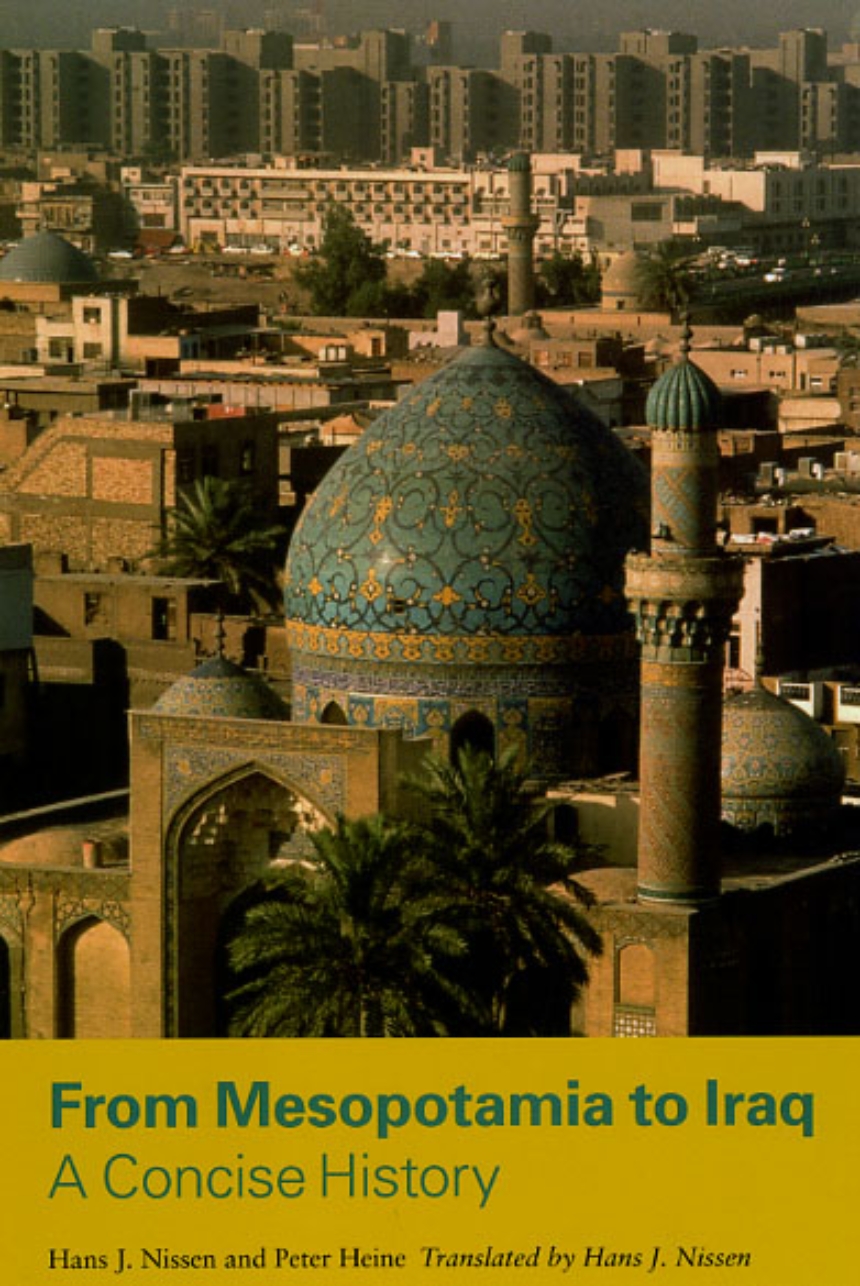From Mesopotamia to Iraq
A Concise History
The recent reopening of Iraq’s National Museum attracted worldwide attention, underscoring the country’s dual image as both the cradle of civilization and a contemporary geopolitical battleground. A sweeping account of the rich history that has played out between these chronological poles, From Mesopotamia to Iraq looks back through 10,000 years of the region’s deeply significant yet increasingly overshadowed past.
Hans J. Nissen and Peter Heine begin by explaining how ancient Mesopotamian inventions—including urban society, a system of writing, and mathematical texts that anticipated Pythagoras—profoundly influenced the course of human history. These towering innovations, they go on to reveal, have sometimes obscured the major role Mesopotamia continued to play on the world stage. Alexander the Great, for example, was fascinated by Babylon and eventually died there. Seventh-century Muslim armies made the region one of their first conquests outside the Arabian peninsula. And the Arab caliphs who ruled for centuries after the invasion built the magnificent city of Baghdad, attracting legions of artists and scientists. Tracing the evolution of this vibrant country into a contested part of the Ottoman Empire, a twentieth-century British colony, a republic ruled by Saddam Hussein, and the democracy it has become, Nissen and Heine repair the fragmented image of Iraq that has come to dominate our collective imagination.
In hardly any other continuously inhabited part of the globe can we chart such developments in politics, economy, and culture across so extended a period of time. By doing just that, the authors illuminate nothing less than the forces that have made the world what it is today.
192 pages | 52 halftones, 42 line drawings, 1 tables | 5 1/2 x 8 1/2 | © 2009
History: Ancient and Classical History, Middle Eastern History
Table of Contents
Preface
1 Landscape, Climate, Population
2 The Beginnings of Sedentary Life
(Ca. 10,000–4000 bce)
3 The First Urban Society and the Use of Writing
(Ca. 4000–3200 bce)
4 City-States and the Way toward the Central State
(Ca. 3200–2350 bce)
5 The First Central States
(Ca. 2350–1595 bce)
6 Babylonia as Part of the Near Eastern Community of States
(1595–1200 bce)
7 The Empires of the Assyrians and the Babylonians
(1200–539 bce)
8 The Achaemenid Empire
(539–331 bce)
9 Alexander and the Seleucids in Babylonia
(331–141 bce)
10 The Empires of the Parthians and the Sasanians
(141 bce to 642 ce)
11 The Islamic Conquest
(622–1258)
12 Iraq as Part of the Ottoman Empire
(1258–1918)
13 Iraq under the Monarchy
(1921–1958)
14 The Republic of Iraq
(1958–2008)
Chronology, 1600 bce to 1900 ce 165
Selected Bibliography
Illustration Credits
Index
